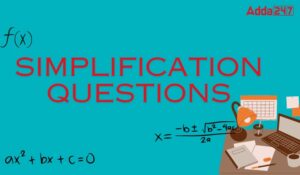Dear Students,
Quantitative Aptitude Questions for IBPS SO Pre 2017
Quantitative Aptitude is a very important section you must prepare if you are aiming for a job in Bank or Insurance sector. These two weeks are very important as IBPS SO Prelims and IBPS Clerk Mains are lined up. So, these 15 questions can help you practice three very important topics of Quant Section.
Q1. In 6 litre mixture of spirit and water there is 15% water. In this mixture 4 litre of another mixture containing 10% water is mixed. After this 1.5 litre of spirit and 0.5 litre of water is mixed in this mixture. Find the percentage of water in the final mixture.
(a) 15%
(b) 25%
(c) 20%
(d) 10%
(e) 12%
Q2. A milkman sells the milk at cost price but mixes water in the milk. In this way he earns 50/3% profit. In what ratio does he mix milk and water?
(a) 5 : 1
(b) 7 : 1
(c) 6 : 1
(d) 3 : 10
(e) 7 : 2
Q3. A can do 50% more work than B can do in the same time. B alone can do a piece of work in 20 hr. A, with the help of B, can finish the same work in how many hours?
(a) 12
(b) 8
(c) 40/3
(d) 11/2
(e) 10
Q4. A tank holds 100 gallons of water. Its inlet is 7 inches in diameter and fills the tank at 5 galloons/min. The outlet of the tank is twice the diameter of the inlet. How many minutes will it take to empty the tank if the inlet is shut off, when the tank is full and the outlet is opened? (Hint: Rate of filling or emptying is directly proportional to the diameter).
(a) 7.14 min
(b) 10.0 min
(c) 10.7 min
(d) 5.0 min
(e) 11.5 min
Q5. A and B started a business in partnership by investing Rs 10,000 and Rs 4000 respectively. Condition of partnership is that B got Rs 100 per month for management of the business. Remaining profit has to be distributed in the ratio of their investments. Find the share of their profit, if the annual profit is Rs 4000.
(a) Rs 3000 each
(b) Rs 2500 each
(c) Rs 1500 each
(d) Rs 2000 each
(e) Rs 1800 each
Directions (6-10): Simplify the following questions.
(a) 22
(b) 36
(c) 49
(d) 56
(e) 46
Q9. 18.657 – 7.549 – 4.111 – 1.630 = ?
(a) 4.673
(b) 6.893
(c) 6.562
(d) 5.367
(e) 6.367
Q10. 2950 ÷ 12.5 + 160 = ?
(a) 392
(b) 390
(c) 396
(d) 394
(e) 400
Directions (11-15): In the following number series one term does not follow the usual pattern. Find that term.
Q11. 7, 10, 17, 27, 44, 71, 116, 186
(a) 27
(b) 44
(c) 71
(d) 116
(e) 186
Q12. 12, 24, 72, 288, 1440, 8645, 60480
(a) 12
(b) 288
(c) 1440
(d) 8645
(e) 60480
Q13. 2, 8, 18, 32, 50, 72, 99
(a) 2
(b) 18
(c) 50
(d) 72
(e) 99
Q14. 5, 6, 14, 43, 184, 925
(a) 43
(b) 6
(c) 184
(d) 14
(e) 925
Q15. 10, 25, 55, 135, 235, 475, 955
(a) 55
(b) 135
(c) 235
(d) 475
(e) 955
You may also like to Read:
- Quantitative Questions for upcoming Banking and Insurance Examinations
- Study Notes of Quantitative Aptitude
- Practice More Data Interpretation Questions
- Quantitative Aptitude Section Strategy





 Simplification Questions For Bank Exams ...
Simplification Questions For Bank Exams ...
 Quantity Comparison Questions for Bank E...
Quantity Comparison Questions for Bank E...
 Mixture & Alligation Questions for B...
Mixture & Alligation Questions for B...





